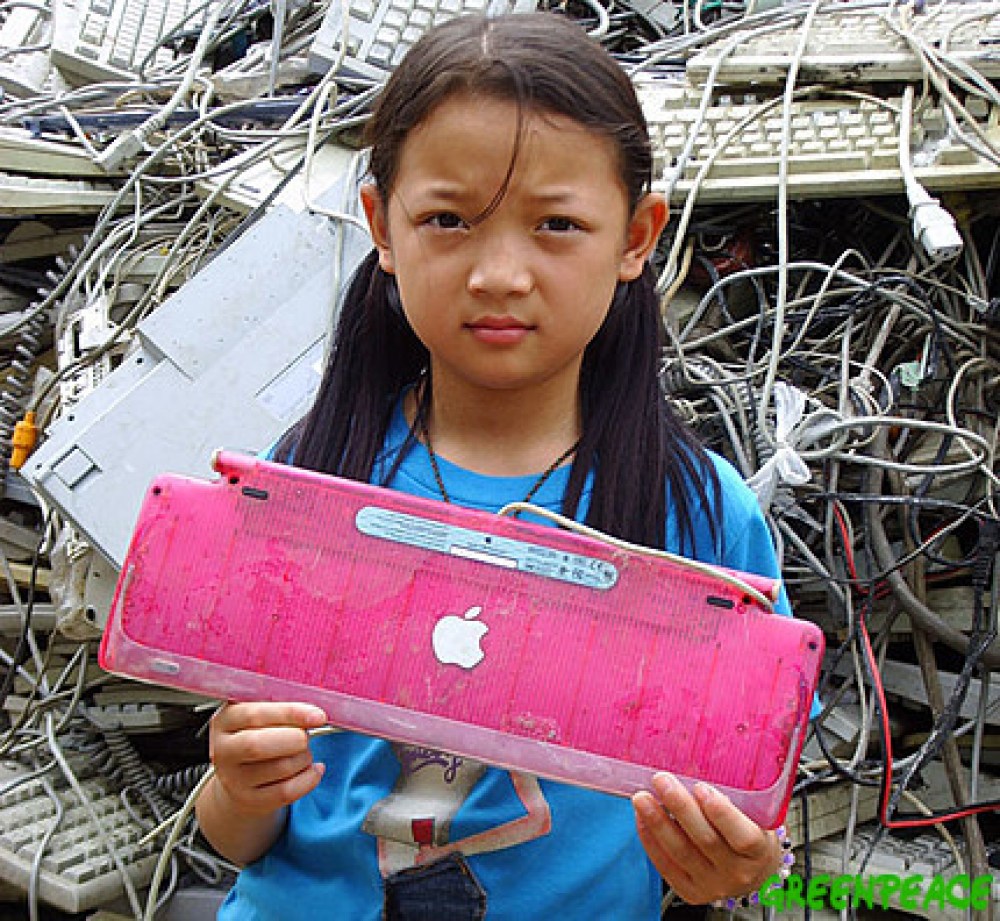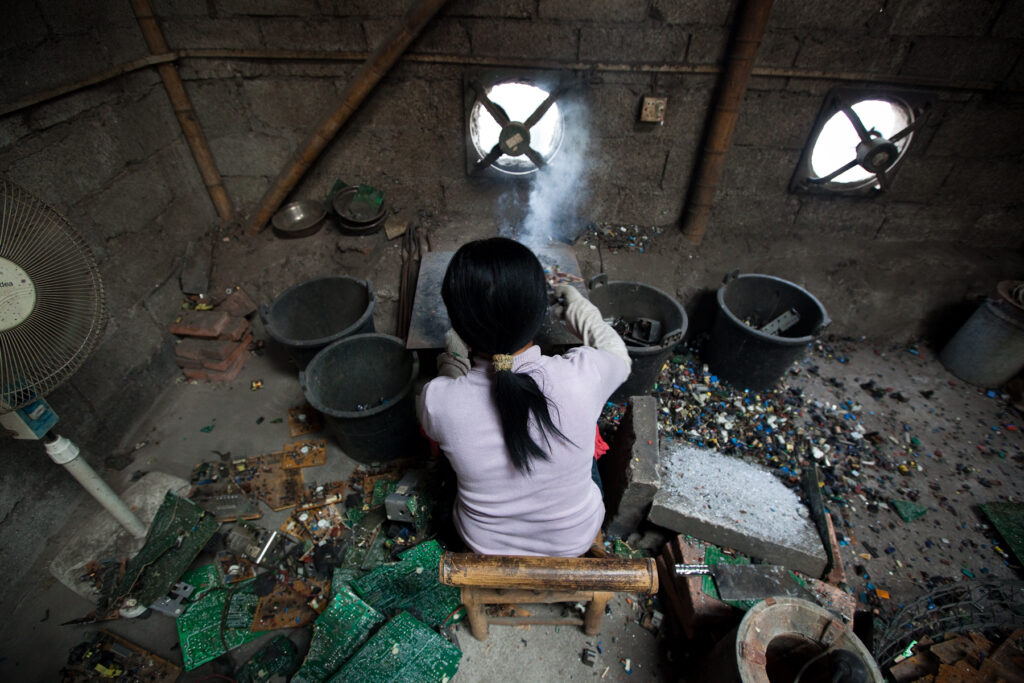Electronic Waste
Millions of tons of e-waste, including computers, printers, mobile phones and TVs are shipped to China, India and Africa for disassembling and disposing. Why? Economic efficiency trumps responsibility! it is cheaper to export e-waste than to follow stricter environmental and safety rules at home. Many discarded electronics are nearly new or have fixable defects. Entire families and communities in the regions where the e-waste is shipped are involved with e-waste. Some so poor and desperate to make money that they ignore the risks of toxic poisoning. Adults and children disassemble wires and circuits with bare hands, extract precious metals using mercuric acid baths without proper protective gear. Handling e-waste without proper protection has significant consequences on human health and environment. For instance, lead poisoning increases stillbirths and premature birth rates, and the toxins hanging in the air and floating in blackened rivers poison people, their food and the environment.

Why should we care?
- E-waste has become a global epidemic with serious consequences.
- Most of the e-waste is illegally shipped to developing countries. By producing more e-waste, we are supporting the practice.
- Certain elements of e-waste are extremely toxic and have devastating effects on humans handling it.
- The atmosphere, plants and animals are also victims of toxins and pollutants coming from e-waste. It also poisons soil and drinking water.
- The e-waste produced annually is worth over $62.5 billion, more than the GDP of most countries. There is 100 times more gold in a tonne of e-waste than in a tonne of gold ore (UN, 2019).
- We can help reduce e-waste by buying durable and repairable electronics, slowing down our pace of upgrading electronics chasing after fashion.


Fast facts
- The world produces 50 million tonnes of e-waste each year, weighing more than all of the commercial airliners ever made. Only 20% of that is properly recycled (UN, 2019).
- Approximately 80% of e-waste in the United States is exported to Asia.
- It is reported that 80% of all Asian children have elevated levels of lead in their systems, as a result of massive handling of e-waste without proper protective measures.
- About 300 million computers and one billion cell phones are produced each year, while the global pile of e-waste is expected to continue growing at the rate of 8% per year.
- Modern electronics contain up to 60 different elements – many valuable, some hazardous, and some both.
- Manufacturers must take greater responsibility for their products from cradle to grave.


